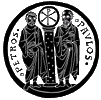What Darwin Couldn't Begin to Know
The war between Noble Scientists and Religious Kooks is familiar to connoisseurs of modern stereotyping, and the most common roles for these stock actors to play is in the debate usually titled "Evolution vs. Creationism."
Note that Evolution is a solid, respectable noun, a square-jawed assertion of how we got here: looks anything but theoretical. Its alternative is not Creation, which would make some sort of parallel sense, but Creationism, hobbled by its concluding, dismissive "ism" like a boxer compelled to wear a frilly bib. But surely Creationism deserves ridicule; it's the province of flatearthers who cling to the King James version of the Bible because that's the kind St. Paul carried. We all know that Evolution was proved long ago.
As too often happens, what everybody knows ain't so. This is partly due to trademark confusion. Sure, modern dogs came from prototype dogs, and birds with the most efficient beaks tend to win the reproduction game; changes like these within a species can be termed "micro-evolution."
But imagine the process necessary to turn a walking catfish into a bird. First mutant nubs appear on the back of one, and these are mysteriously so beneficial (and attractive?) that it outbreeds nubless catfish. Occasional mutant descendants have bigger nubs, and somehow this is also a vast advantage. Finally multi-great-grandchildren are dragging large, clammy, hinged protuberances along on their afternoon strolls. It will take a few more millennia to develop that great idea — feathers — and more yet to think up beak and bird legs and hollow bones.
But true believers must squint and convince themselves that, at every point, these mutations give our proto-birds the winning advantage in the race for survival. It's a leap of faith. Here in the arena of "macro-evolution," which jumps the lines of species, is where the faith of true-believers is most vigorously tested. The testing has just gotten much harder. In his [1996] book, Darwin's Black Box (Free Press), Michael Behe, an associate professor of biochemistry at Lehigh University, has looked beyond the already-problematic questions of crude morphology. In his time, Darwin could offer a reasonable explanation for how a photosensitive spot could gradually evolve into a human eye (though not for how a photosensitive spot came to be in the first place). But this was analogous, Behe says, to "answering the question, ‘How is a stereo system made?' with the words, ‘By plugging a set of speakers into an amplifier, and adding a CD player, radio receiver, and tape deck.'"
Darwin could only deal with externals; the world of the cell was a "black box" (like the inside of an amplifier) that could not be opened. With the advent of electron microscopes and high-powered imaging, that box has been opened to reveal a world of unimaginable complexity.
Behe terms it "irreducible complexity." In order to reduce the eye-glazing complexity of molecular biochemistry, he invites us to imagine a mousetrap. This is a simple machine composed of few parts — yet if one part were missing the whole thing would be useless. It cannot have any physical precursors, or have spontaneously assembled itself out of unrelated parts. It must be, from its first appearance, able to perform its function. Behe examines numerous examples at the cell level — vision, blood clotting, cellular transport — that show this sort of irreducible complexity. Darwin could not have known these existed, but there is no excuse for scientists to evade the problem now. Behe's conclusion: These irreducibly complex systems can't be explained by happy accident or minute, gradual change. These systems are the work of a designer. Not a classical God, necessarily. Like the monolith on the moon in the baffling film "2001: A Space Odyssey," we recognize immediately that it was created by someone, but even decades later we may have no idea who. Recognizing the presence of a designer is the first step.
Yet, despite Behe's caution, this suggestion gets him carted unwillingly back to the beginning of the debate. Critics insinuate that he's smitten with religious notions and trying to pack science into a bible-shaped box. It's an ad hominem charge that seeks to distract from, rather than reply to, his troubling assertions. Good science is supposed to be built on honest assessment of facts, even if the facts overturn dearly held preconceptions. At least, that's what we were told when it was imagined that Darwin had eliminated the need for a Creator. Now that the mousetrap is on the other foot, it feels less comfortable.
After kicking him around awhile for having gullible faith in God, scientists critical of Behe generally admit they can't refute his charges. Nevertheless, they have faith that one day science will be able to do so. It seems a weak rebuke, just a matter of where you choose to put your faith. But perhaps gullibility is in the eye — or in the photosensitive spot — of the beholder.
and trying to pack science into a bible-shaped box.
